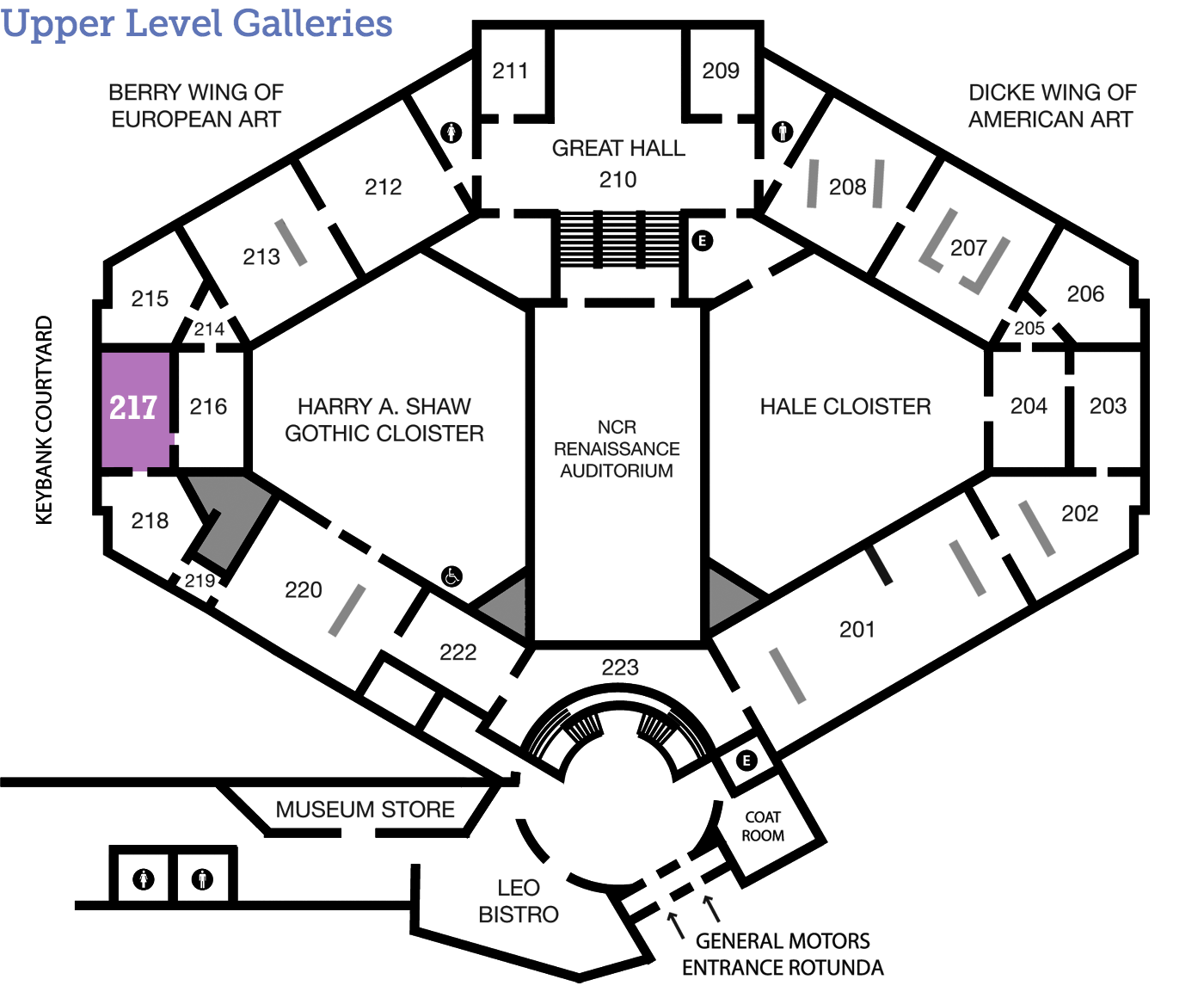
Bartolomeo Manfredi
Allegory of the Four Seasons
(c. 1580–1621)
Italian c. 1610 Oil on canvas 53 x 36 inches Gift of Mr. and Mrs. Elton F. MacDonald 1960.27
What are you looking at?
As you meet the gaze of the woman looking out of this painting, what is she saying to you? Who is the group she is with and what are they doing? Take a closer look and learn something about Italy 400 years ago, as well as a timeless message for today.
A Day in the Life
Tools and Techniques
Behind the Scenes
Framed!
Can a frame change the way you see a painting? In 2015 The DAI acquired a replica frame of an early 17th-century Italian (Roman) example. It is a wonderful marriage with this painting by Bartolomeo Manfredi, an artist working in Rome during the early 17th century.
The frame is a cassetta-style frame, a type of frame developed during the Early Renaissance period in Italy (1400–1479). Typically they are simple box-like frames (cassetta means “little box”) finished with gold, paint or left natural and stained. These types of frames have the same distinctive inner and outer moldings around a rather flat central frieze. Here, the inner and outer moldings are gold and the central frieze is black with a delicate pattern of subtle gold arabesques. The dramatic black frieze complements the dark background of the painting, and the visual rhythm of the interior gold molding with its carved laurel-leaf pattern resonates in the foliated wreaths worn by the two figures embracing at left. You can see how the painting looked in the previous frame in the picture below.
Funds for the frame generously provided by the Sortman Conservation Fund in memory of Ronald Sortman.
Look Closer
Just for Kids
Signs & Symbols
A Not-so-hidden Message
Allegory is a way of communicating complex ideas or a moral message through physical symbols. Today, the figures and symbols in Manfredi’s Allegory of the Four Seasons may seem like a secret code, but viewers in Manfredi’s day would have read this painting like a book. The painting highlights the human senses and the passing of time. Look for symbols of touch (figures embracing), taste (fruit), sight (mirror), smell (flowers), and hearing (lute). Fresh fruit, which ripens and rots quickly, emphasizes impermanence, and the four people represent the passing of time in the four seasons. The message: life is brief; consider how you are living and if you need to change anything.
Dig Deeper
Arts Intersected
Sound of the Seasons
What music might Manfredi have listened to? What sound does the lute—the stringed instrument the woman is playing—make? Find out by listening to the Dayton-based Wind in the Woods Early Music Ensemble perform the song “Torneo Amoroso” (“Tournament of Love”) from a collection of choreographed dances by Fabrito Caroso de Sermoneta (1526/1535–1605/1620).
Performed by Margaret Erin, Jean Hutslar, Elizabeth Morris, Lawrence Pitzer, Sally Snyder. Recorded by Christopher Erin.
For more information on performances and recordings by Wind in the Woods Early Music Ensemble, please visit http://www.windinthewoodsearlymusic.com.
The Sculpture Speaks
Did You Know?
Expert Opinion
Look Around
About the Artist
Caravaggio and Manfredi
Many of the paintings from the late 1500s and 1600s in The DAI’s collection bear the influence of Caravaggio, but how did his influence spread? Dominique Vasseur, former Senior Curator at The DAI from 1979–1999, explains how Bartolomeo Manfredi helped popularize the work of his close associate. Look for some of the other painters he mentions in Galleries 216 and 217.
Transcript:
This picture, which is an allegory of the four seasons, was painted by one of the first and closest followers of the highly talented Italian painter, Michelangelo Merisi da Caravaggio, known simply today as Caravaggio. Caravaggio helped to revolutionize Italian art by breaking with the fashionable mannerist style, which was prevalent during the late sixteenth century. He replaced it with paintings of believable, real people set in stage-like settings and lit with dramatic lighting from outside the picture plane. Manfredi knew Caravaggio. He may have even been his studio assistant, and therefore he was able to assimilate Caravaggio's style in a very pure and direct manner. It was Manfredi then who helped to disseminate Caravaggio's style throughout Europe. Artists like Honthorst, ter Brugghen, Vouet, Stom and Saraceni—all artists represented in our collection—were profoundly influenced by Caravaggio's revolutionary art, which they might have know through seeing the works of Caravaggio directly, or also through Manfredi's painting and influence.
Talk Back
First Impressions
Without thinking about the allegorical meaning of the different elements of this painting, what was your first impression of it? How has your impression changed as you have learned more about it? Are there details that stand out to you now that you did not notice before?

